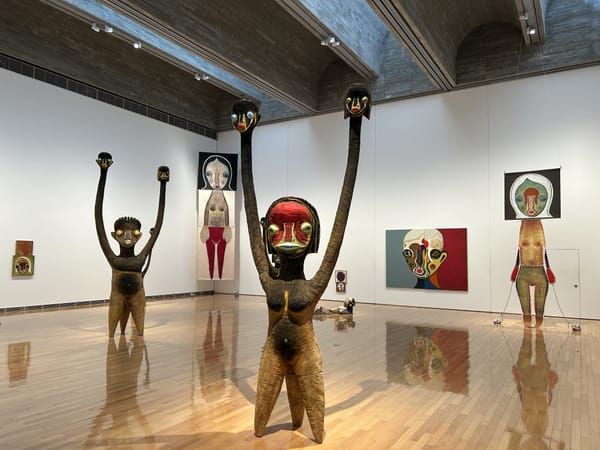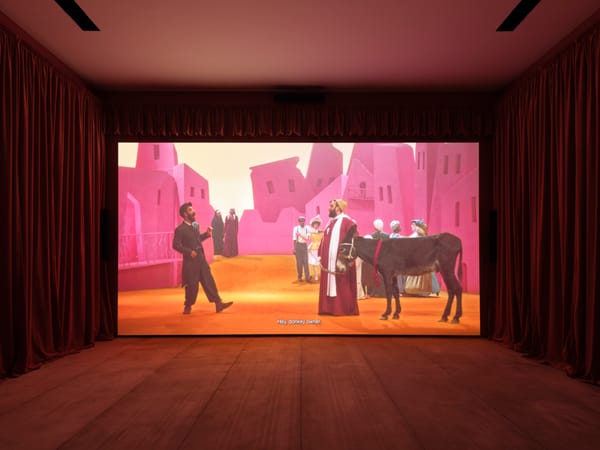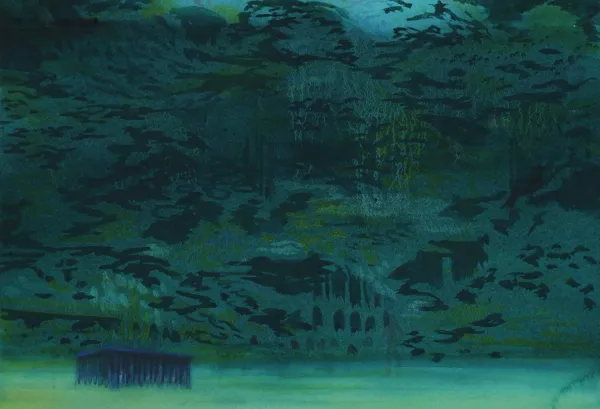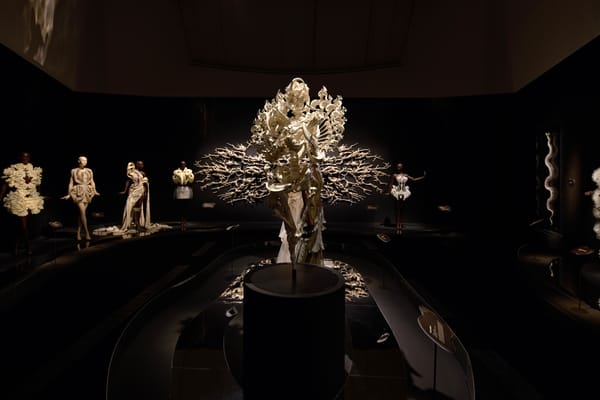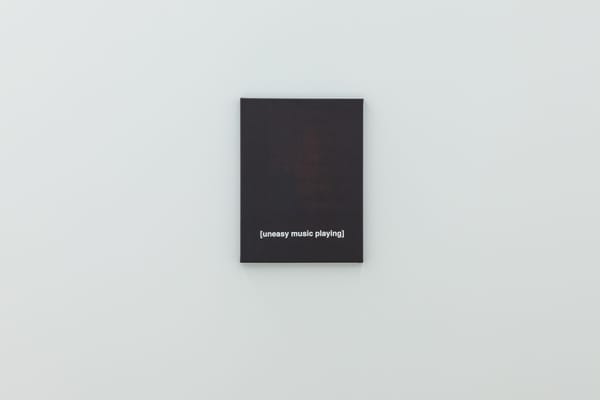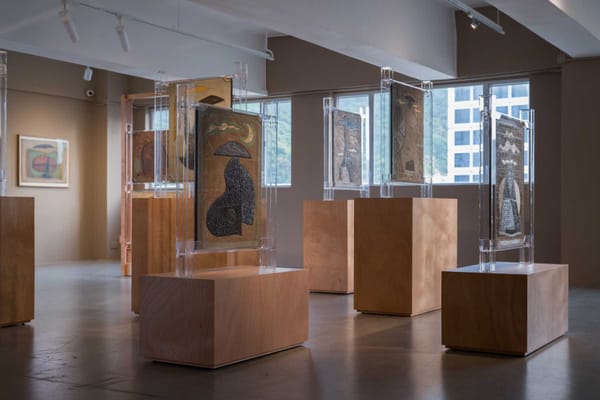Shows
Huang Rui’s “Ink Paintings 1980–2000”
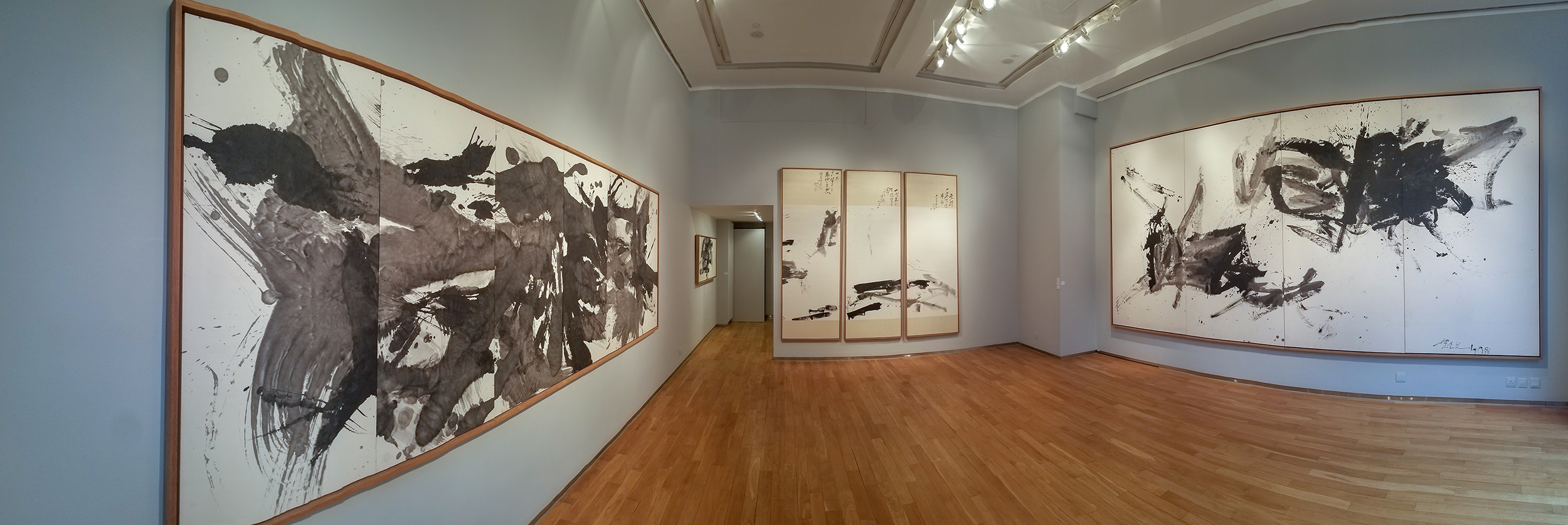

From protests against government censorship in the 1970s and ‘80s as part of the Chinese avant-garde artist collective, the Stars Group (of which Ai Weiwei, Ma Desheng and Li Shuang were members), to more recent advocacy to save Beijing’s Dashanzi Factory site—now the flourishing 798 Art District—from the wrecking ball, Huang Rui has always been deeply entangled in contemporary social and political concerns in his home country. This activist streak often eclipses a more subdued aspect of his identity—he is a keen reader of Chinese philosophical classics like the Book of Changes, one of the oldest Chinese divination texts, and this is precisely what shines through in his ink paintings, presented in a survey at Hong Kong’s 10 Chancery Lane Gallery.

Located in an uncommonly quiet road just a stone’s throw from the busy Central shops and offices, the gallery welcomed its visitors with two large-scale paintings on either side of the foyer walls, behind the white portieres of its glass entrance doors. On the right was Black and White Chinese Landscape Painting (Ink 158) (1990), a five-meter-long work with neither classic texture strokes outlining mountains, waterfalls and rocks, nor dots of distant vegetation—in short, none of the most common elements in a traditional Chinese landscape piece. Instead, featuring splashes of black ink that gallop across four sheets of paper, with trails of white produced through feibai (literally, “flying white”)—a special technique that forces the drier tips of the brush to separate, leaving ribbon-like blank spaces on the paper—the work embodies speed and vigor, more reminiscent of Abstract Expressionism than traditional Chinese shanshui paintings.
Facing Ink 158 was Untitled (Ink 102) (1985), an abstract composition comprising six sheets of paper that seems to echo the former work, only this time, the flowing brushstrokes are truncated at the borders of two conterminous sheets. Being both continuous and fragmented, the work reflects some of the key philosophies of the Book of Changes, in which the 64 hexagrams that foretell the future can all be decomposed into two types of lines, a continuous line and a broken one, representing yang and yin respectively.
The idea of playing with fluidity and disconnectivity pervades throughout the rest of the works on display, most interesting among which are three ink paintings titled I, II and III (all 1993). While we may admire the spaces created by deep ink strokes formed above the light ones in each separate work, it is not until they are juxtaposed together that the dynamic interaction of the three emerges. Again, the strokes of ink, though interrupted by the frames, travel across borders to materialize into more concretely defined blocks or resolve into amorphous washes of gray, a process that reflects the Chinese idea of the beginning of the universe, which is perhaps best explained by a famous Lao Tzu saying: “The way begets one; one begets two; two begets three; three begets the myriad creatures.” Chinese calligraphic inscriptions at the top of the paintings, such as “One divides into two, and philosophy is born; one, two, three strokes, and the myriad creatures are in harmony,” contain similar philosophical thoughts.

Further into the gallery were smaller pieces utilizing a wider color palette. In Courtyard Days (Ink 69) (1982), thick strokes of red ink evoke the walls of the Forbidden City, along with its darker connotations as a symbol of autocratic imperial China, or, from a contemporary viewpoint, the site of the Tiananmen Square massacre that would occur several years after the work’s creation, while finer brushwork outlines the house, road and people in black ink. Color is introduced not through ink but textile in Kyoto Image No. 18 (Ink 212) (1998), created during Huang’s period of self-exile in Japan. Four strips of traditional Japanese cloth in different colors and patterns are overlaid on one half of the paper, while amorphous, vigorous splashes of black ink appear in the other half, creating an asymmetrical yet harmonious composition.
Huang’s approach to ink is elemental, organic and evocative. With a focus on the beauty of the brushwork itself, the artist conveys his interpretation of some essential parts of Chinese philosophy—a dialectics of both aesthetics versus meanings, and freedom versus constraint.
Tianhui Huang is an editorial intern of ArtAsiaPacific.
Huang Rui’s “Ink Paintings 1980–2000” is on view at 10 Chancery Lane Gallery, Hong Kong, until June 22, 2018.

